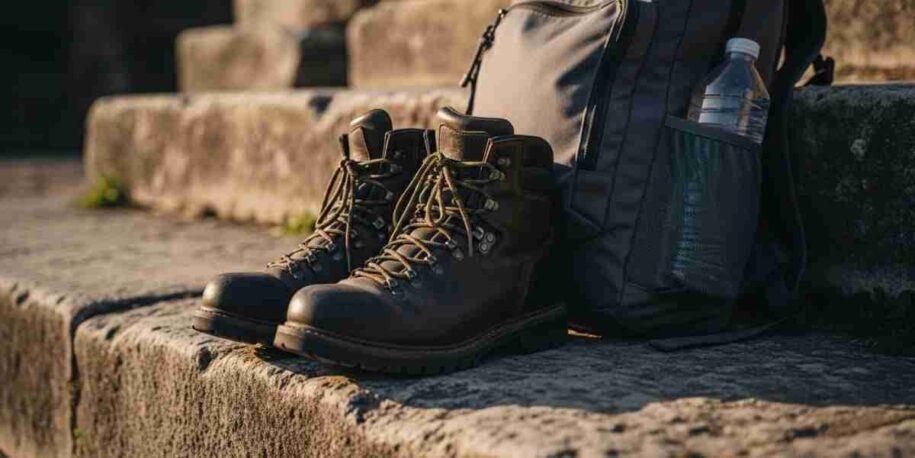The journey to Machu Picchu via the classic Inca Trail is more than a simple hike; it’s a step back in time along paths trodden by an ancient civilization, surrounded by landscapes that command respect and awe. To truly savor every moment—from the crisp mountain air to the breathtaking vistas—requires preparation. A solid Inca Trail training plan is the foundation upon which an unforgettable experience is built. It’s not about becoming an elite athlete, but about conditioning your body to handle the demands of altitude and terrain, allowing your spirit to fully absorb the journey.
This practical 4-week guide is designed for individuals with a reasonable baseline of fitness. It’s your roadmap to building the stamina and strength needed, ensuring you arrive at the Sun Gate feeling strong, confident, and ready for the final, glorious view of the lost city.
The Pillars of Your Preparation: Altitude, Cardio, and Strength
Before diving into the weekly plan, it’s crucial to understand the three core components of your training. Effective Inca Trail physical preparation isn’t just about walking; it’s a holistic approach.
- Cardiovascular Endurance: The trail involves long days of walking, with significant ascents and descents. A strong heart and lungs are non-negotiable. This is your engine for the trek.
- Strength Training: Your legs will carry you up thousands of stone steps, and your core will keep you stable on uneven ground. Focused strength work prevents injury and reduces fatigue.
- Acclimatization Simulation: While you can’t perfectly replicate the high-altitude environment of the Andes, you can prepare your body for hiking with a weighted daypack and practicing on varied terrain.
Your 4-Week Countdown to the Trail
Week 1: Building the Foundation
This week is about establishing a consistent routine. Don’t push too hard; the goal is to awaken your muscles and cardiovascular system.
- Cardio: Aim for 3 sessions of 30-45 minutes. This could be brisk walking, jogging, cycling, or using an elliptical machine. The key is to elevate your heart rate to a steady, conversational pace.
- Strength: Complete 2 full-body workouts. Focus on compound movements.
- Squats: 3 sets of 10-12 reps
- Lunges: 3 sets of 10-12 reps per leg
- Plank: 3 sets, hold for 30-45 seconds
- Push-ups (on knees or toes): 3 sets to your comfortable limit
- Hike: One long walk or hike of 60-90 minutes on rolling terrain if possible. Wear the hiking boots you plan to use in Peru to start breaking them in.
Week 2: Increasing Intensity
Now we build on the base you’ve created. The focus shifts to increasing duration and adding some specific challenges.
- Cardio: Increase to 3-4 sessions. Two sessions should be 45 minutes at a steady pace. One session should introduce intervals: warm up for 10 minutes, then alternate 2 minutes of high effort with 2 minutes of recovery, for a total of 20-25 minutes, then cool down. This is excellent training for high altitude trekking.
- Strength: Stick to 2 workouts, but increase the challenge. Add light weights to your squats and lunges if you can, or increase the reps.
- Step-ups (on a bench or sturdy chair): 3 sets of 15 reps per leg
- Calf Raises: 3 sets of 20 reps
- Back Rows (with resistance bands or dumbbells): 3 sets of 12 reps
- Hike: A longer hike of 2-3 hours. Find some hills or stairs to climb. Pack a daypack with about 5 kg (11 lbs) to simulate carrying your water, snacks, and rain gear.

Week 3: Peak Performance Training
This is your most challenging week. We are pushing your limits to simulate the toughest parts of the Inca Trail, like the ascent to Dead Woman’s Pass.
- Cardio: Maintain 3-4 sessions. Your interval session should be tougher. Your steady-state cardio for Inca Trailprep should now be 60 minutes long.
- Strength: This is your final week of heavy strength training for hiking. Focus on muscular endurance.
- Reduce weight slightly but increase reps on squats and lunges (15-20 reps per set).
- Incorporate single-leg exercises like single-leg deadlifts to improve balance.
- Continue with core work, increasing your plank hold time.
- Hike: The most important workout of your plan. Aim for a 4-5 hour hike with your fully loaded daypack (6-7 kg or 13-15 lbs). Try to find a route with sustained inclines and declines. This hike is as much a mental test as a physical one.
The Mental Game and Essential Gear in Your Inca Trail Training Plan
As you progress, remember that mental fortitude is just as important as physical fitness. Visualize yourself on the trail, feeling strong and enjoying the views. Use your long hikes to test not just your body but also your gear. Ensure your hiking boots are comfortable and that your daypack fits well.
Week 4: Taper and Recover
You don’t want to arrive in Cusco exhausted. This final week is about tapering down your training to allow your body to recover and store energy for the main event.
- Cardio: Reduce to 2-3 light sessions of 30 minutes each (e.g., easy jogging or walking).
- Strength: One very light bodyweight-only session at the beginning of the week. No heavy lifting.
- Hike: One short, easy walk of about 60 minutes. No heavy pack.
- Rest: Prioritize sleep, hydration, and good nutrition. Stretch gently. You’ve done the hard work; now it’s time to let your body consolidate those gains.
Your Journey Begins Now
This plan is a guide, a framework for your success. Listen to your body, adapt where necessary, and remember that every step you take in training is a step toward a more profound and enjoyable experience in the Andes. The trail is a challenge, but it is one you are now ready to meet. The preparation itself becomes part of the adventure, building anticipation for the moment you finally walk through the Sun Gate.
Embark on Your Adventure with Confidence
Preparing for the Inca Trail is the first step of an extraordinary journey. Ensuring every detail of that journey is seamless and authentic is our specialty. We handle the logistics so you can focus on the experience. Ready for your trip? Chat with us on WhatsApp for a no-obligation chat.

